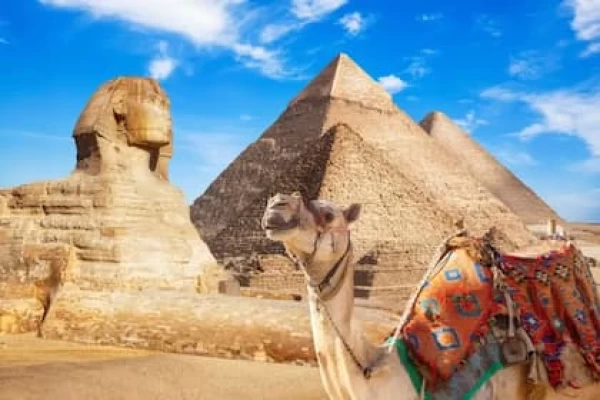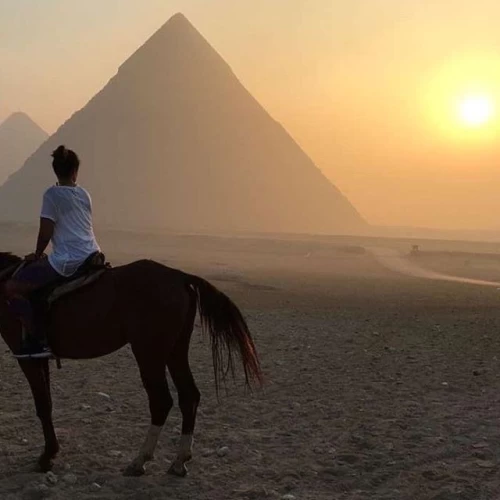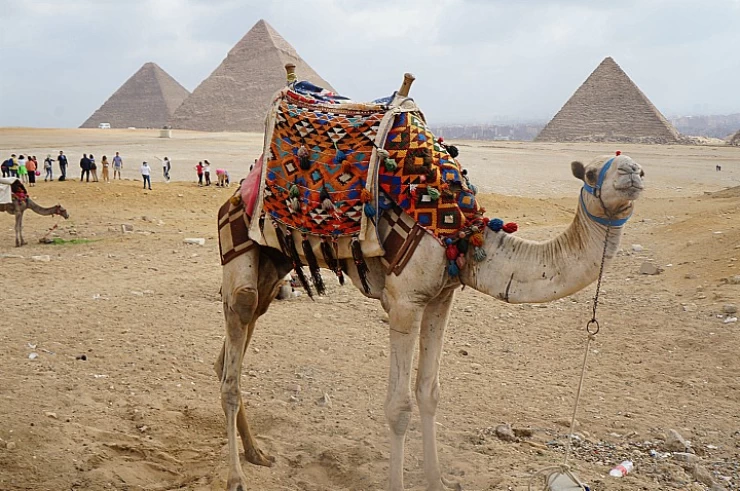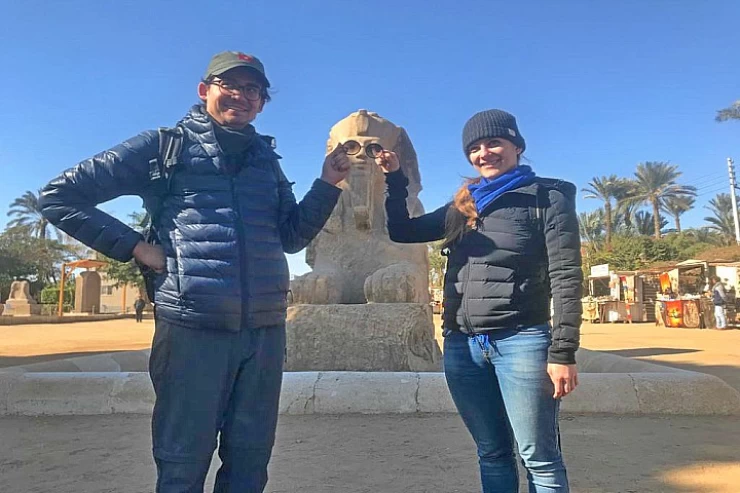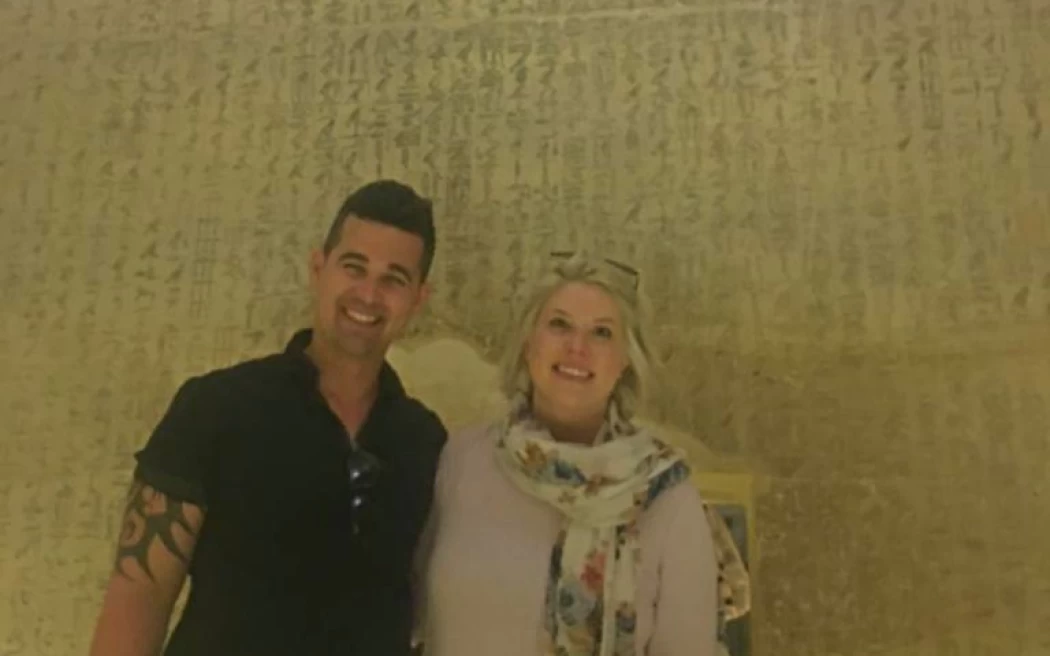
萨卡拉的特提金字塔
萨卡拉的特提金字塔:埃及旧王国被遗忘的宝石
萨卡拉墓地(Saqqara necropolis)拥有Teti金字塔,这是年龄和意义递减顺序中最有趣的金字塔之一。 这座金字塔是为古埃及第六王朝的第一位国王法老特提建造的,大约在公元前2345年至2333年之间。 小特提金字塔,这可能不像着名的大金字塔在吉萨,这一天仍然显着,因为在特提金字塔墙内发现的金字塔文本,显示了古埃及人对宗教的信仰。
与其他有趣的结构一样,如Djoser的阶梯金字塔,Teti金字塔位于Saqqara地区。 作为,在外表面上,一个小金字塔能够躺在纪念碑后面,特提金字塔辐射相当大的精神力量和建筑剧变,这是非常迷人的人在埃及的历史。 这就是为什么这个金字塔是负担得起的游客。
历史背景:第六王朝与法老特提
法老特提是埃及第十王朝统治者中第一个建造金字塔的人。 这一时期标志着旧王国第五王朝在西部沙漠金字塔建筑的顶点结束,以及广泛的政治和经济问题的开始。 即使在泰蒂统治时期,他在埃及蓬勃发展的文明中登基,它也是一个伟大而富有的第一阶国家。 然而,国家制度内部的冲突迹象,以前相当稳固和集中,开始出现,为如此坚定地描绘的权力内部的未来冲突奠定了基础。
特提在第五王朝的最后一位国王乌纳斯国王完成统治后上台。 他还尊重大时代的传统和金字塔建筑文化。
仅在大约十二年的权力中,尽管他的统治时间很短,但Teti在Saqqara的金字塔及其太平间建筑群表明了他的愿望,以某种方式超越凡人领域,继续崇拜埃及原始神 当人们考虑到旧王国时期埃及的宗教习俗时,金字塔也是非常重要的,因为Teti的坟墓包含金字塔文本,这些文本作为埃及丧葬习俗的一部分一直存在。
建筑意义:优雅简约
特提金字塔曾经是一个巨大的结构,有一个光滑的白色石灰石外壳,使它在炎热的沙漠阳光下闪闪发光。 然而,金字塔的外表面多年来遭受了苦难,现在已经被打破了。 相比之下,内部的理由保持相对完整,从而保持了金字塔本质的内在意义。
与吉萨的其他大金字塔相比,特蒂金字塔的高度为52米(170英尺),两侧的底座为78.5米(258英尺)。 然而,金字塔最有趣的部分仍然隐藏。 它的光滑的形式已经被观察到作为一个建筑姿态,从以前的金字塔结构的旧王国演变。 然而,创新是在结构之内。 特别是,装饰在金字塔内部墙壁上的神圣图像和宗教文本是新的。
泰蒂的金字塔和当时的其他皇家金字塔一样,也建造了一座太平间神庙和一条连接的堤道,通往尼罗河畔的山谷神庙。 这条堤道既是已故君主穿越世界的仪式轨道,也是牧师和会众在葬礼期间的道路。 今天,大部分结构都是废墟,但它的设计塑造了与埃及金字塔建造相关的传统。
金字塔文本:解锁古埃及灵性
特提金字塔展示了一个特殊的重要性特征:她在墓室墙壁上的金字塔文本,这是已知最早的宗教性铭文之一。 他们记录了详细的祈祷,赞美诗和咒语,有助于使法老居住在另一个世界,他们是现存最古老的宗教铭文。
这些经文的目的是保护和帮助国王的灵魂,以确保他复活和与众神永恒的同在。 它们包含了国王升天的方法,提到太阳神拉,冥界的神奥西里斯,以及为安全祈祷其他神。 这些宗教着作可以被认为是后来出现的更精细,长写的陪葬铭文的先驱,例如在中王国和新王国期间的棺材文本和死亡之书。
这些着作即使对今天的考古学家和历史学家来说也是非常重要的,因为它们说明了像埃及人这样的古代人的宗教信条。 Teti金字塔中的金字塔文本与他的前任Unas的金字塔中的金字塔文本或多或少相同,这表明整个朝代的埋葬实践是一致的。
内室:神圣之旅
参观特提金字塔的游客可以潜入建筑的内部,看到容纳早已死去的法老的骨灰盒的房间。 然而,首先,游客必须爬过一条黑暗,狭窄,倾斜的通道,通向几个房间,这些房间是为了保持国王的尸体安全和精神通往另一个世界。
进入墓室的参观者首先看到的是一个巨大的石棺,据信它包含了特提的尸体,并被放置在墓室的中心。 尽管石棺的设计或多或少是朴素的,但它巨大的规模和在房间里的位置表明了法老最后安息之地的重要性。
金字塔文本由象形文字组成,这些象形文字被严重刻在墓穴周围的石灰岩墙壁上,排列在墓室的两侧。 它们是清晰的诗意和虔诚的故事,反映了埃及人的古老概念和他们对不朽的信仰。
萨卡拉墓地:死亡之地的泰蒂金字塔
Тети的金字塔坐落在广阔的萨卡拉墓地中,该墓地被用作古埃及统治者和精英的墓地数千年。 这座位于萨卡拉的古老墓地以Djoser国王的阶梯金字塔而闻名,这是世界上第一座完全由石头建造的人造纪念性建筑。 然而,它远非它唯一的奇迹,因为它拥有无数的坟墓和金字塔,这些墓穴显示了古埃及人埋葬死者的方法是如何在这些年里取得进展的。
在特提金字塔附近也可以找到为法老特提服务的高级官员和贵族的坟墓,供所有游客体验。 梅勒鲁卡墓是最着名的墓之一,是泰蒂的一个大臣的美丽装饰墓。 Mereruka的坟墓包括许多浮雕,展示了日常,乡村和仪式生活的各个方面,有助于了解埃及的旧王国。
萨卡拉墓地仍然是考古发现的主要地点,定期发现新的坟墓和文物,揭示了埃及的古老过去。
为游客隐藏的宝石
泰蒂金字塔可能不以其宏伟的比萨斜塔和吉萨金字塔而闻名,但它肯定为那些希望欣赏埃及历史的人提供了一个相当难忘和更个人的体验。 与有大量游客在场的金字塔结构不同,Teti金字塔是一个相当空旷的地方,使游客能够以更深入和平静的方式游览其内部周边。
Teti金字塔还提供了一个惊人的洞察历史,游客不仅可以了解古埃及人建造金字塔的传统,还可以踏入埃及王朝之一法老的鞋子。
由于广泛的墓地和令人印象深刻的墓葬和结构阵列,Saqqara为游客提供了一个机会,见证从子宫开始建造金字塔的变化模式,从早期王朝的设计概念到旧王国 在这种进化发展中,特提金字塔占据了重要的地位,因为它象征着旧王国丧葬建筑风格的顶峰和古埃及宗教多层次性质的强化。
结论:Teti金字塔永恒的遗产
特提金字塔是一座被古埃及古王国遗迹所包围的建筑,它幸存至今,也塑造了后来的文化、宗教和建筑。 虽然它是在废墟中,金字塔仍然是一个宝贵的信息来源,关于宗教和建筑的最发达的文明在人类历史上之一。
对于对埃及历史遗迹着迷的游客来说,特提金字塔尽管与其他建筑有着悠久的历史联系,但仍然是一个尚未开发的宝藏,与吉萨壮观的建筑相比,人群较少,炒作较少。 总而言之,进入坟墓阅读那些非常相同的铭文感觉有点欣喜若狂,这些铭文曾经被读给死去的法老,以帮助他的灵魂在死者的土地上航行。 它也是对死后生命的渴望的一个鲜明的提醒,这种渴望渗透到这个文明中,以及埃及文化中根深蒂固的生、死和天堂的相互关系。无论你是否献身于古埃及文化的研究,或者你是第一次访问,任何人都会同意,前往特提金字塔是值得所有的时间和精力投入,给人一个原始的历史和灵性的人类已知的最古老和令人敬畏的文化之一的味道。
Saqqara necropolis houses the Teti pyramid, which is one of the most interesting pyramids in decreasing order of age and significance. This pyramid was built for Pharaoh Teti, the first king of the Sixth Dynasty of ancient Egypt, approximately between 2345 and 2333 B.C. In this manner, this structure is an integral part of Ancient Egypt's elaborate royal tomb architecture. The small Teti Pyramid, which may not be as famous as the Great Pyramids at Giza, to this day remains significant because of the Pyramid Texts found inside the Teti Pyramid walls that show what ancient Egyptians believed about religion.
Like other interesting structures, such as the Step Pyramid of Djoser, the Teti Pyramid is located in the Saqqara area. Being, on the outer surface, a small pyramid able to lie behind the monuments, the Teti pyramid radiates considerable spiritual strength and architectural upheavals, which are very fascinating to people in the history of Egypt. That is why this pyramid is affordable for the tourists.
Pharaoh Teti was the first of the Tenth Dynasty rulers of Egypt who built its pyramids. This period marked the end of the apex of the pyramid building of the Old Kingdom’s Fifth Dynasty at the Western Desert and the onset of widespread political and economic troubles. Even during the reign of Teti, who ascended the throne in the flourishing civilization of Egypt, it was a great and rich country of the first order. However, the signs of conflict within the state’s system, which had previously been quite solid and centralized, began to emerge, laying the groundwork for future conflicts within the power depicted so firmly.
Teti came to power after King Unas, the last king of the Fifth Dynasty, completed his reign. He also respected the traditions of the great eras and the pyramid-building culture.
In about twelve years of power only, despite his short rule, Teti's pyramid at Saqqara with its mortuary complex points to his wish somehow to transcend the mortal realm and continue with the veneration of the primitive deities of Egypt. The pyramid is also of great importance when one considers the religious practices of Egypt during the Old Kingdom, owing to Teti's tomb containing Pyramid Texts, which survive to this day as a part of funerary customs in Egypt.
The Pyramid of Teti was once a large structure with a smooth casing of white limestone that made it glisten under the hot desert sun. However, the outer surface of the pyramid has suffered over the years and is now broken. In contrast, the inner grounds have remained relatively intact, thereby maintaining the inner significance of the essence of the pyramid.
With a height of 52 meters (170 feet) and a base measuring 78.5 meters (258 feet) on each side, the Pyramid of Teti is relatively small when compared to the other great pyramids of Giza. However, the most interesting part of the pyramid remains concealed. Its smooth-sided form was already observed as an architectural gesture that evolved from the previous pyramid constructions of the Old Kingdom. However, innovations were within the structure. Particularly, the sacred images and religious texts that were decorated on the walls of the interior parts of the pyramid were new.
Teti's pyramid, like the other royal pyramids of its time, was also built with a mortuary temple and a connected causeway leading to the Valley temple at the bank of the Nile. The causeway functioned both as a ceremonial track for the departed monarch in his traversal to the world beyond and as a path for priests and congregants during burial services. Most of the structure is in ruins today, but its design has shaped the traditions associated with the construction of pyramids in Egypt.
The Pyramid of Teti displays one exceptional characteristic of importance: her Pyramid Texts on the walls of the burial chambers, which are among the earliest known inscriptions of a religious nature. They record detailed prayers, hymns, and spells that contributed towards enabling the pharaoh to inhabit the other world, and they are the most ancient known religious inscriptions in existence.
The texts served the purpose of shielding and assisting the soul of the king in such a way that he is ensured of resurrection and eternal presence with the gods. They contain ways in which the king could rise to the heavens, mention of Ra the sun god, and Osiris the god of the underworld, and prayers to other gods for safety. These religious writings can be considered precursors to the more elaborate, long-written funerary inscriptions that came later on, such as the Coffin Texts and the Book of the Dead during the Middle Kingdom and the New Kingdom.
These writings are of great importance even for present-day archaeologists and historians as they illustrate the religious tenets of ancient people like the Egyptians. The Pyramid Texts in Teti's pyramid are more or less the same as those in the pyramid of his predecessor Unas, suggesting a consistency in the burial practices throughout the dynasties.
The Interior Chambers: A Sacred Journey
Visitors to the Pyramid of Teti can plunge within the structure's interior and see the chambers that housed the urn of the long-dead pharaoh. First, however, visitors must crawl through a dark, narrow, sloping passage that leads to several rooms built to keep the king’s corpse safe and to the spirit’s way to the other world.
What first meets the eye of the visitors who enter the burial chamber is a large stone sarcophagus, which is believed to have contained the body of Teti and which has been placed in the center of the chamber. Even though the design of the sarcophagus is more or less plain, its massive scale and location in the room indicate the importance of the pharaoh’s final resting place.
The Pyramid Texts, which consist of hieroglyphs that are grossly incised on the limestone walls encasing the tomb, line the sides of the burial cell. They are clear poetic and devotional stories that reflect the ancient concepts of the Egyptians and their faith in immortality.
Saqqara Necropolis: Teti’s Pyramid in the Land of the Dead
Тети’s Pyramid is situated in the expansive necropolis of the Saqqara, which was used as a burial ground for thousands of years for the rulers and elites of ancient Egypt. This ancient cemetery in Saqqara is best known for the Step Pyramid of King Djoser, the first man-made monumental structure in the world constructed solely of stone. However, it is far from its only wonder, for it holds countless tombs and pyramids, which show how the ancient Egyptians’ methods of burying their dead progressed throughout the years.
Tombs of the high officials and nobles who served Pharaoh Teti can also be found near the Teti Pyramid for all visitors to experience. The Tomb of Mereruka is one of the most famous and is a beautifully adorned tomb of one of Teti’s viziers. Mereruka’s tomb includes many reliefs showing aspects of daily, rustic, and ritual life that help understand the Old Kingdom in Egypt.
The Saqqara necropolis continues to be a major site for archaeological discovery, with new tombs and artifacts uncovered regularly, shedding light on Egypt’s ancient past.







